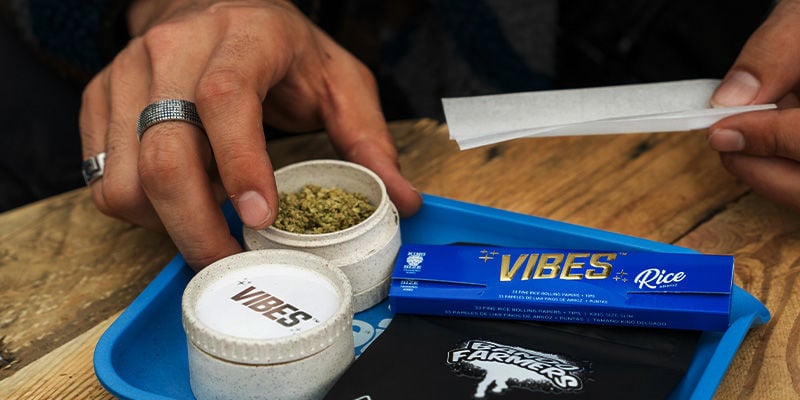
10 Reasons You Might Not Get High From Weed
What did you feel the first time you consumed cannabis? For some people, the answer is "not much". Surprisingly, there may be various reasons for this. It could be something as simple as not using enough weed or not inhaling properly, or it could be down to physiological reasons. On this page, we explore all of the reasons for not getting high.
Consuming weed often results in giggles, fun conversations, creative thoughts, and some much-needed rest. Sounds good, right? That's why some people become disappointed when they feel nothing at all.
Thankfully, not getting high after smoking a joint is rare. It mainly occurs among beginners taking a toke for the first time. But it can also happen to more experienced blazers out of the blue. Read on to discover what happens to the body after consuming weed, and the top reasons you might sometimes miss out on your expected high.
What does it mean to be high on cannabis?
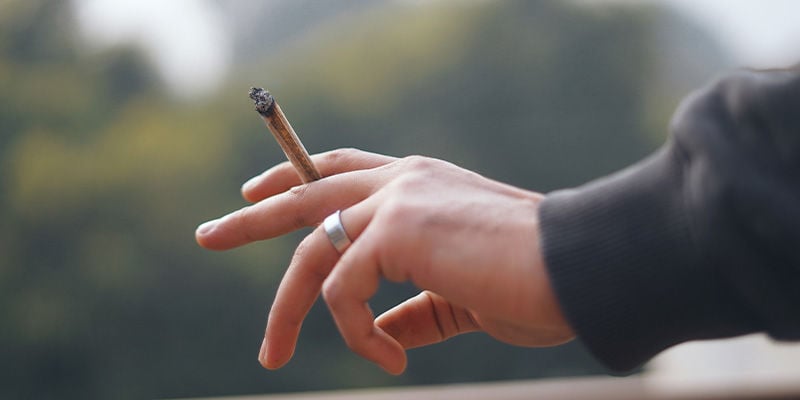
The term “high” describes the intoxicated state that arises after ingesting or smoking THC. Humans have grown and used cannabis for thousands of years to achieve this altered state of mind.
While different cannabis strains produce varying effects, the underlying high remains similar. An elevated mood, deep thoughts, increased appetite, and enhanced creativity typically characterise the experience. However, the same substance affects individuals differently. While we can't know for sure how everyone will feel after consuming weed, millions of cannabis lovers report similar effects across the board.
How is a weed high established in the body?
After inhaling cannabis through a joint or vaporizer, THC enters the bloodstream deep inside the lungs. Studies have shown that, from there, it reaches the body's circulation and penetrates the blood–brain barrier (Daneman & Prat, 2015). After gaining entry into the brain, THC molecules produce a high by interacting with the endocannabinoid system. More specifically, THC binds to a group of receptors known as CB1. This activity leads to a variety of outcomes, such as a rise in dopamine levels, which culminate in the quintessential psychotropic effect of cannabis.
The pathway is slightly different after chowing down on marijuana edibles. Oral THC passes through the digestive system before being absorbed and making its way to the liver. The liver then converts the THC molecules into a more potent compound called 11-hydroxy-THC, which produces a longer-lasting and more psychedelic-like high.
10 reasons you're not getting high from marijuana
So, what’s happening when people inhale or ingest marijuana but don't get high? There are several reasons this phenomenon might occur. Below, we explore 10 of the most common reasons, to get to the bottom of why you're not feeling sufficiently high.
1. First time using cannabis
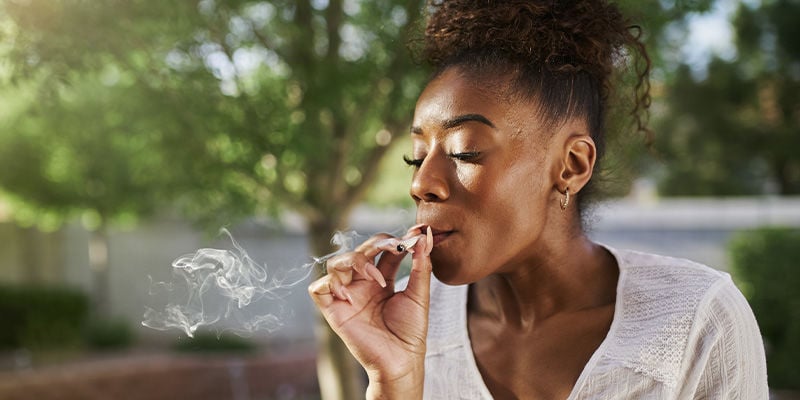
Many cannabis users report feeling a different kind of high, or simply no high at all, when they first use weed. There are numerous variables that play into this experience. For example, beginners are unlikely to smoke correctly during the first few sessions, especially without the guidance of a more seasoned weed lover.
Some theories even pin not feeling high on underlying physiology. After consuming weed over a more extended period, the body starts to express more cannabinoid receptors to meet the demands of all that THC floating around. This is known as receptor upregulation. In beginners, a reduced number of cannabinoid receptors means THC has a lot fewer sites to bind with to produce its effects.
2. Not knowing what to expect
Not knowing what to expect can also influence what you feel after consuming cannabis the first few times. Without prior experience, you might fail to notice THC's subtle effects. Most first-time smokers only take a few small hits and expect to be blasted off into space. Instead, this amount will produce barely noticeable effects (especially if the THC content of the cannabis strain is mild).
While many novices pass this off as a failed attempt, you should try to really pay attention to the minor shifts in your mood, thoughts, and bodily sensations. Although it might not seem like much, this is an ideal way to introduce yourself to weed. Dipping a toe in and taking your time to explore far outweighs becoming overwhelmed and getting put off on your first try.
3. Not inhaling properly
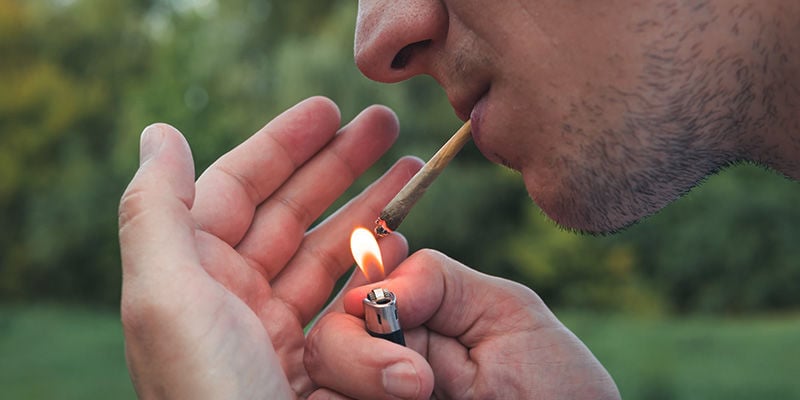
Inhaling cannabis smoke incorrectly skews the high of many first-time marijuana smokers. If you've never smoked anything before, prepare to feel a harsh sensation in your throat, and to cough a few times. After this, you’ll probably want to take a few sips of water. This initial unpleasant feeling leads many novices to simply inhale into their mouth before immediately exhaling. You might experience a slight high with this technique, but it's unlikely to unleash the full potential of cannabis.
Instead, learn to draw the smoke all the way into your lungs. You don't need to hold it in, but make sure you inhale deeply before exhaling. This will ensure all of those THC molecules make it into your bloodstream, so you don't waste a single hit.
4. Using a poor-qualtiy product
There are two categories of beginner when it comes to the world of cannabis: those who have experienced friends to guide them, and those who choose to navigate the terrain alone. The former often get treated to high-quality weed from the get-go. With no mentors to source good weed, the latter often start out buying and using more poor-quality cannabis.
While high-quality buds look nicely manicured, sufficiently dried, and coated with trichomes, poor-quality buds are typically seedy, half-wet, untrimmed, and contain low levels of THC. Even if you inhale properly, through no fault of your own, you'll experience a mediocre high at best.
5. Not using enough weed
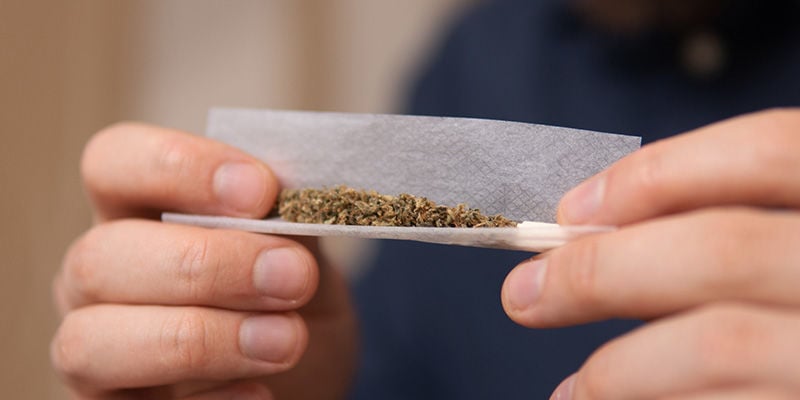
Uncertainty is common among beginners, which can lead them to use too little herb the first time they smoke. Moreover, you must consider the actual content of what you're smoking. Smokers in the United States or Canada often use nothing but cannabis flowers when rolling a joint, increasing the likelihood of getting high. In contrast, many European smokers often add tobacco when rolling a spliff.
Placing tobacco into the mix can make your cannabis roll-up seem a lot bulkier than it really is, so you may get the impression you are smoking more weed than you actually are. Moreover, using tobacco may leave users feeling high because of a nicotine rush as opposed to the THC. Although we recommend taking your time to find the optimal cannabis dose, don't be afraid to pack your joints with more weed if you don't feel high the first few times.
However, if you're really looking to dial in your doses, whether smoking, vaping, or eating delicious edibles, there are tools that can help with the task, such as a milligram scale.
6. The weed contains more CBD than THC
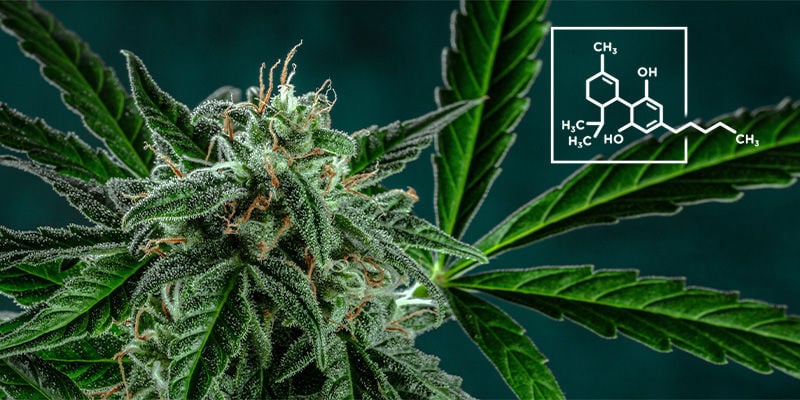
In recent years, cannabis breeders have developed strains that contain much higher quantities of CBD, or cannabidiol. This molecule produces no intoxicating effects but leaves users feeling mellow and alert.
Some strains offer equal amounts of THC and CBD, whereas others contain high levels of CBD and almost no THC. If you're packing out your joints and bongs with flowers and not feeling high, check out the cannabinoid profile of the strain you're using to make sure it contains enough THC to deliver the desired outcome.
7. Wrong consumption method
Starting with more complex can make getting high a lot more difficult in the beginning. Sure, fancy desktop vaporizers, sophisticated water pipes, or electronic dab rigs all look very attractive, but their more complicated operation also leaves a lot of room for error and can overall hinder the experience.
We recommend smoking a simple joint when using cannabis for the first time. Light up the end, take a deep inhalation, and you'll experience all the cannabinoids and terpenes that cannabis has to offer. From there, take a further step into the world of bongs, bubblers, and pipes. These devices take a bit more skill to use than a spliff, but they're still pretty easy to operate. Once you're comfortable with these methods, you'll graduate into the domain of marijuana edibles, dabbing, and vaping without any issues.
8. High tolerance
It's not just beginners that struggle to get high sometimes. Advanced smokers can also find themselves missing out on the full effects of THC. After smoking for a while, the amount of CB1 receptors in the body increases. However, after chronic exposure to THC, they start to dwindle. Thus, heavy cannabis users can become partially desensitised to the psychotropic cannabinoid over time. Simply put, this means it takes more and more marijuana to feel the same effects. This is called tolerance.
Fortunately, it only takes a short break from cannabis to return CB1 receptor expression back to normal again. It usually takes anywhere from two days to two weeks to feel properly high once more.
9. Endocannabinoid deficiency
Although hotly disputed amongst cannabis industry professionals, clinical endocannabinoid deficiency, otherwise known as CECD, describes a physiological state where the body produces low levels of endocannabinoids. These molecules serve as chemical messengers and help many other bodily systems function, from the digestive system to the nervous system. Each individual has their own “endocannabinoid tone”, or the amount of endocannabinoids that their body produces.
Cannabinoids such as THC share a trait with endocannabinoids, allowing them to bind to the same receptors. THC may only return a person's endocannabinoid tone to a baseline level if they experience endocannabinoid deficiency, meaning it might take a lot more cannabis for these individuals to start feeling the psychotropic effects. This is just conjecture, though.
10. Are hormones blocking your cannabis high?
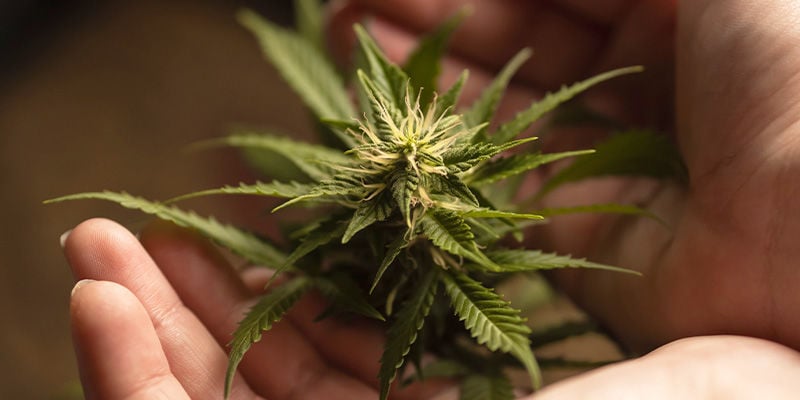
The hormones present in your body might also change the way cannabis affects you. Just like we produce varying levels of endocannabinoids, we also synthesise different levels of hormones. Produced by the adrenal glands, pregnenolone serves as a building block for steroid hormones such as oestrogen and DHEA.
However, high endogenous levels of both of these hormones may reduce the cannabis high by blocking THC's effect on CB1 receptors. Therefore, a marijuana user with high pregnenolone levels might require higher doses of THC to feel comparable effects. If you're looking to test your pregnenolone levels, this can be easily done by booking an appointment with your doctor.
What to do if you don't get high on cannabis
If you don't get high the first few times you smoke weed, don't worry about it! It's more common than you may think. Simply try a few more times and allow your body to get used to the herb. You might find that you experience a breakthrough the third or fourth time you try smoking a joint.
Sometimes, it might simply be a matter of your unique physiology. Reduced endocannabinoid tone or higher levels of certain hormones might mean you require more THC than your fellow smokers. And maybe you are not really a smoker; in this case, vaping, eating, or drinking cannabis is perhaps the best way to go. Eventually, you'll figure out the perfect dose and the form that works best for you.
- Richard Daneman, & Alexandre Prat. (2015, January). The Blood–Brain Barrier - https://www.ncbi.nlm.nih.gov
-
 6 min
17 March 2025
What to do when you're too high on cannabis
We all get too high sometimes. It par for the course. However, it can help to know what to do when we get into this state, and knowing how to avoid it in the first place is vital knowledge, too.
6 min
17 March 2025
What to do when you're too high on cannabis
We all get too high sometimes. It par for the course. However, it can help to know what to do when we get into this state, and knowing how to avoid it in the first place is vital knowledge, too.
-
 2 min
12 March 2021
The Difference Between High And Stoned
Whether you're an avid smoker or just enjoy the occasional joint, there are typically two ways you'll describe your experience—feeling high or feeling stoned. You may think those terms describe the...
2 min
12 March 2021
The Difference Between High And Stoned
Whether you're an avid smoker or just enjoy the occasional joint, there are typically two ways you'll describe your experience—feeling high or feeling stoned. You may think those terms describe the...





 United States
United States

